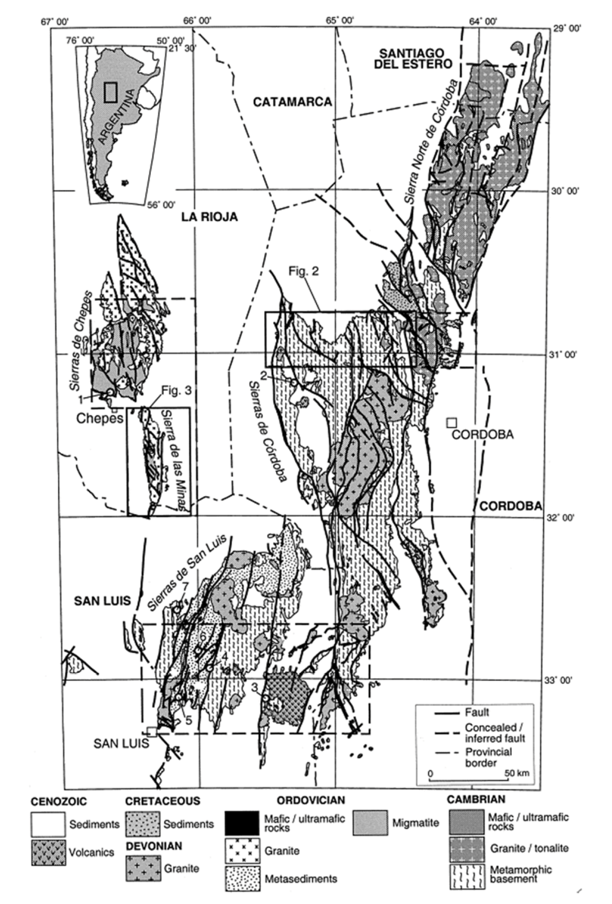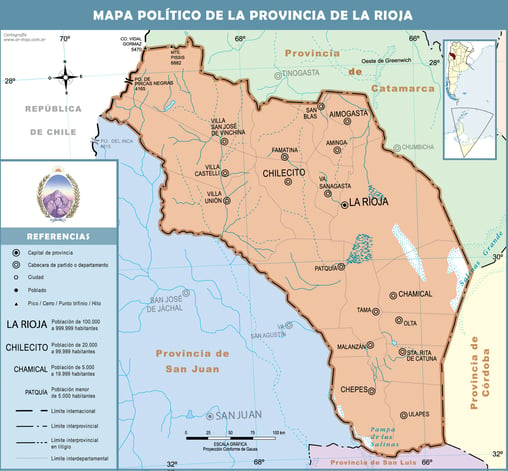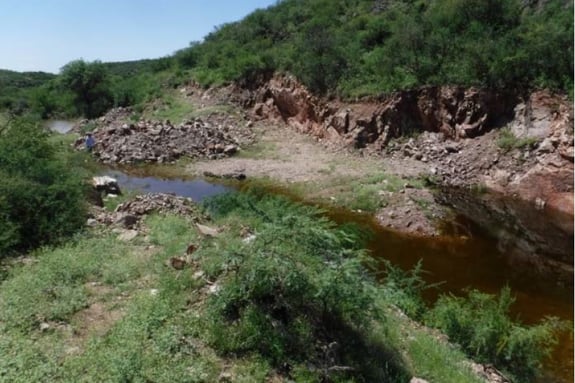

Area & Tenure
The property comprises ten mineral concessions covering a combined 10,303 hectares, each fully documented under Argentine provincial mining law
Exposures of this unit are confined to the central-western part of the Sierra de Las Minas. The granitoidunit (Og) and granodiorite unit (Ogd) are gradational and poorly defined. The plutonic rock types in thisunit are thought to be comagmatic with the plutonic rocks of the other units of the Chepes igneous complex, and therefore their crystallization age is early Ordovician.
The rock types making up this unit are described in separate sections on the migmatite (Omg), granitoid(Og) and tonalite (Ot) units.
The exposure of this unit is restricted to the southern part of the Sierra de Las Minas. This unit, together with the Quemado norite which it encloses, is characterized by a very high aeromagnetic signature and a low radiometric response, and on Landsat TM images, it stands out by a relatively dark tone.
Caminos (1979) included this unit in the ‘normal facies of the Chepes Formation’ consisting of massive granodiorite and tonalite. The unit grades into the surrounding granitoid unit (Og). The contact with the Quemado norite appears to be gradational (see Quemado norite).
Although grey, fine to medium-grained tonalite is the characteristic rock type of this unit, it is closely accompanied by, and gradational to, granodiorite. Locally granodiorite makes up about 50% of the outcrop.
The main rock-forming minerals of the tonalite are plagioclase (30-45%), quartz (10-40%), biotite (5-20%), and hornblende (0-35%). The minor constituents include magnetite (<5%), muscovite (<5%), primary epidote (<1%), allanite (<1%), titanite (<1%), and locally orthopyroxene (<1%).
The rocks are affected by deformation and greenschist facies regional metamorphism. Quartz is recrystallized to a fine, polygonal granoblastic matrix commonly forming parallel aligned ribbons. The plagioclase, particularly the cores, is altered to very fine or microcrystalline epidote/clinozoisite and sericite; biotite is variably replaced by chlorite and epidote/clinozoisite. A weakly to moderately developed foliation is defined by quartz ribbons and trails of recrystallized biotite.
The magnetic susceptibility of tonalite samples collected from all units of the Chepes Igneous Complex is moderate to high, ranging from 300 to 1500 x 10-5 SI (Pieters et al., 1997).
Location
Situated in the Sierra de las Minas district, 55 km south-southeast of Chepes (Pop. 11,000) and 250 km east of San Juan via paved highway, these lands benefit from year-round gravel‐road access


Location Details
Esperanza Property spans 10,303 hectares, located 55km from Chepes in La Rioja province, known for past gold and silver mining.
Accessibility
55km south-southeast of Chepes


Contact
Esperanza property is located in Sierra de las Minas (SDLM), southern part of La Rioja Province, in the departamento Rosario Vera Peñaloza (Township), Argentina.
info@esperanzamining.org
© 2025. All rights reserved.


